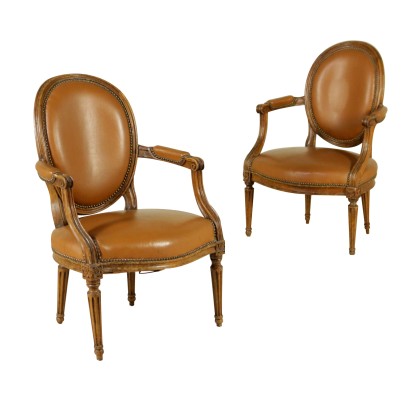Pair of armchairs Neoclassical
Features
Style: Neo-Classical (1765-1790)
Age: 18th Century / 1701 - 1800
Year: Ultimo quarto '700
Origin: France
Main essence: Beech
Description
Armchairs originally lacquered, straight from the legs and trunk-conical. Have the back and seat are upholstered.
Product Condition:
Product that due to age and wear and tear requires restoration and resumption of polishing.
Dimensions (cm):
Height: 89
Width: 57
Depth: 56
Seat height: 36
Additional Information
Style: Neo-Classical (1765-1790)
This historical period includes a first phase that can be properly defined as the Louis XVI style.nOnly at a later time, with the maturation of archaeological fashions, was a new vision of furnishing civilization formulated and codified, now fully attributable to the Neoclassical Style.
In fact, both trends coexisted in unison until the last years of the eighteenth century.
nIn the field of cabinet making, the Directoire, Retour d'Egypte, Consular and Empire styles also fall within the neoclassical era.
nFind out more about Neoclassicism with the insights from our blog...
n






















